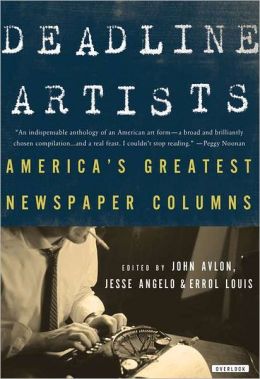 Whitey Bulger: American’s Most Wanted Gangster and the Manhunt that Brought Him to Justice by Kevin Cullen and Shelley Murphy
Whitey Bulger: American’s Most Wanted Gangster and the Manhunt that Brought Him to Justice by Kevin Cullen and Shelley Murphy
As I write this book review, Whitey Bulger sits in jail after being on the run for than 15 years before he was captured with his girlfriend in Santa Monica, California where they had been living under assumed false names. Whitey is scheduled for trial in June of this year (2013) in Boston where he is accused of committing numerous murders plus other crimes which took place over more than fifty years. The statue of limitations is 20 years for all crimes except murder. Even now prior to this long anticipated trial there are numerous legal maneuvers taking place, the latest being the replacement of a federal judge who was ordered to step down from the trail because he was federal prosecutor in Boston in the 1980s at the time Bulger was working as an FBI informant while allegedly committing crimes including murder.
This book which is written by two award winning Boston Globe crime reporters who have researched book in great detail which is documented at the end of their work. The references include various books and articles as well as interviews with many of criminals who were at one time confederates of Bulger, federal and local law officers, as well as an assortment of other people whose paths crossed with Whitey Bulger.
There is no doubt that this man is one of most remarkable criminals of our time and yet on the other hand is a typical product of the south side of Boston for his generation. Not that most of the young men who grew up there at that time became criminals. Whitey’s own brother Bill Bulger became one of the most prominent and popular members of the Massachusetts state legislature. Others of the kids in his neighborhood became lawyers judges, doctors businessmen etc. Perhaps what characterized them was being children of immigrants (in this case Irish whereas in other nearby locales it was Italian), poverty, hard working parents, competitiveness, being a street fighter when necessary and usually intense loyalty to one’s buddies. Why some kids would choose a life of crime, drugs or drug dealing, be gamblers, or run protection schemes and shakedowns is a complicated questions and even this insightful book couldn’t really figure it out. What is clear, is that Whitey Bulger grew up as very smart tough guy and served honorably in the US military, became up a budding criminal and as a young man spent a lot of time in federal prisons including Alcatraz. An interesting sidelight of his early years of incarceration in the 1950s and 60s, is that while in prison he volunteered, in exchange for some time off his sentence, to be subject in the infamous government sponsored research about LSD. He had no way of knowing about the resultant persistent hallucinations and periodic paranoia that he would have for several years before they faded into the background. This is not to suggest that LSD was responsible for his subsequent life of crime but it is an early example of how his life became greatly impacted by the federal government.
Upon his release from federal detention after serving a substantial number of years, still in his 30s perhaps with some intention of going straight, he soon became very involved with the crime and the gangster world of the Irish gangs vs the Italian (Mafia ) gangs. He became enmeshed in a life of crime which mostly included bank robberies, shakedowns and protection for the gamblers and drug dealers, as well as an occasional murder of another bad guy who from his point of view clearly deserved this fate. During the course of this life style he made the acquaintance of some FBI guys – one in particular who were interested in using him as an informant as was a common practice of the G-Men. Whitey got drawn into this role along with one of his partners in crime , although they didn’t take money for passing on information particularly info about their competitors in the Mafia. His relationship with the FBI is probably the most revealing aspect of this book and an area which has already been a fascinating subject for students of this era and are sure to be a focal point of the upcoming trial of Bulger. Some of the FBI agents grew up in the same home territory as Bulger. They themselves were seemingly fascinated and intrigued by the underworld of crime which they interacted with as they extracted information from their informers which allowed them to eliminate many of the leading criminals of that time. At least one of Whitey’s FBI handlers received great honors and commendations from his higher up in the FBI. Whitey on the other hand was often tipped off in ways that protected him from being caught and which also identified other criminals who were working against him . This led to Whitey having to eliminate some of them. It seemed pretty clear that these FBI people knew of Whitey’s high crimes including many murders which on occasion even accidentally murdered the wrong person and at least two times killed women for various reasons. Now that Whitey Bulger is coming up for trial and a new generation of agents and prosecutors appear ready to ask for whatever justice is possible for society and the families of these murdered victims, what will this now 83 year old man reveal about his life of crime and his relationship with the FBI ?
The authors have done a very good job in documenting this man’s life and his relationships. At times, I thought they overdid descriptions of his everyday mundane life in the name of being as complete as they could. Of course they were writing in the third person and they could only imagine his inner thoughts and feelings, based on all their sources which included people quoting Whitey and telling and even a few of his writings and letters. As interesting as the story and the life of this man is, I did not have any certainty that they really got inside of his head. I could not help compare this book to another story of a gangster criminal that I recently read, “I Heard You Paint Houses” which is the story of the man who says he killed Jimmy Hoffa and describes the details in a very believable fashion. That book was written by Charles Brandt, a former prosecutor based on interviews and the cooperation of the subject, another Irishman Frank Sheeran who was very close although not a full fledged member of the Mafia. It felt 100% genuine. Nevertheless the Bulger story is unique enough and one that is known to most Bostonians and should be known by anyone fascinated by crime in America. This is especially true as the trial goes on which is scheduled to take place June . It will be certainly in all the newspapers and featured on all those news magazine tv shows, and this book will allow you to have a deeper understanding of one the most important criminals cases of the last century as it comes to it’s final conclusion.
 The Red Sparrow by Jason Matthews – The Sparrow School is a school for specialized training of selected Russian spies in the art of sexual seduction which becomes helpful in recruiting people to betray their government and work for Russia. One of the central characters of this book did go through this school although this is not the main emphasis of this true to life spy story. It is true to life because the author, Jason Matthews, like John La Carre, Ian Flemming and other well known writers did serve as an agent but not for the British as they did, or for the Russians, but for the Americans. He worked for the CIA for 33 years having postings all over the world, being a station chief in several countries and by his own admission recruiting double agents and training many of his junior colleagues in the art of spycraft. The details of carrying out espionage in a foreign country or trying to catch a traitor in your own country apparently requires meticulous attention to detail, complicated dead end drops, surveillance, counter- surveillance, studying everyone and every thing in the street, parks or alleys around you , looking for people who might be looking for you, taking circuitous routes, doubling back, using parallel patterns of following targets, making “fish-hook” changes in direction and being a master of code words and code messages. There are hidden video cameras and microphones, special transmitters that shoot signals to satellites. There are agents from both sides that try to recruit each other and there are moles deep in the government of one side or the other. Yet the story rings true not only because the author lived in this world but because we all know from the newspapers and television something about this history of the real world of espionage that continues even after the end of the so called “cold war”. Matthews does more than present us with authenticity. He also shows us his ability to write and capture images that imprint in the reader’s imagination. Here is a passage which the author is setting up an important event.
The Red Sparrow by Jason Matthews – The Sparrow School is a school for specialized training of selected Russian spies in the art of sexual seduction which becomes helpful in recruiting people to betray their government and work for Russia. One of the central characters of this book did go through this school although this is not the main emphasis of this true to life spy story. It is true to life because the author, Jason Matthews, like John La Carre, Ian Flemming and other well known writers did serve as an agent but not for the British as they did, or for the Russians, but for the Americans. He worked for the CIA for 33 years having postings all over the world, being a station chief in several countries and by his own admission recruiting double agents and training many of his junior colleagues in the art of spycraft. The details of carrying out espionage in a foreign country or trying to catch a traitor in your own country apparently requires meticulous attention to detail, complicated dead end drops, surveillance, counter- surveillance, studying everyone and every thing in the street, parks or alleys around you , looking for people who might be looking for you, taking circuitous routes, doubling back, using parallel patterns of following targets, making “fish-hook” changes in direction and being a master of code words and code messages. There are hidden video cameras and microphones, special transmitters that shoot signals to satellites. There are agents from both sides that try to recruit each other and there are moles deep in the government of one side or the other. Yet the story rings true not only because the author lived in this world but because we all know from the newspapers and television something about this history of the real world of espionage that continues even after the end of the so called “cold war”. Matthews does more than present us with authenticity. He also shows us his ability to write and capture images that imprint in the reader’s imagination. Here is a passage which the author is setting up an important event.

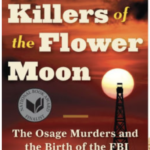

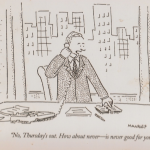
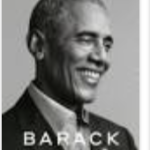
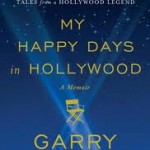
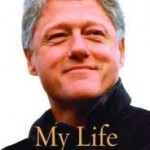
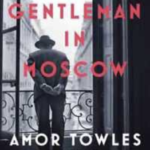
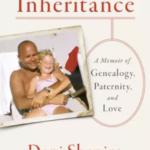
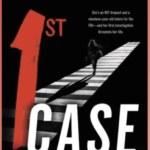
 Maus I & II- by Art Spiegelman Reviewed by Lucy Blumenfield (Age 12) – Although there are other books that tell the tale of the Holocaust through a survivor’s perspective, this book is unique. It is the story, and it is true, about a man—Art Spiegelman, the author—who interviews his father—Vladek Spiegelman to preserve his story of the Holocaust, and illustrating this story in the form of a graphic book. Spiegelman uses animals to express the way different groups of people in this book might act. For example, he uses mice as the Jews, cats as the Germans, and pigs for this Poles. This really intensified the book because it kind of showed you who someone was and also made a political statement in my view. Spiegelman’s illustrations make this haunting story come to life as he tells about his father’s struggles: first hiding in house to house with his wife, trying to escape Poland, and finally being captured and put into Auschwitz, and after ten months being freed and reuniting with his wife. The book changes back between Art’s visits to his not-in-great-shape father in Rego Park, and his father’s experiences told by Vladek.
Maus I & II- by Art Spiegelman Reviewed by Lucy Blumenfield (Age 12) – Although there are other books that tell the tale of the Holocaust through a survivor’s perspective, this book is unique. It is the story, and it is true, about a man—Art Spiegelman, the author—who interviews his father—Vladek Spiegelman to preserve his story of the Holocaust, and illustrating this story in the form of a graphic book. Spiegelman uses animals to express the way different groups of people in this book might act. For example, he uses mice as the Jews, cats as the Germans, and pigs for this Poles. This really intensified the book because it kind of showed you who someone was and also made a political statement in my view. Spiegelman’s illustrations make this haunting story come to life as he tells about his father’s struggles: first hiding in house to house with his wife, trying to escape Poland, and finally being captured and put into Auschwitz, and after ten months being freed and reuniting with his wife. The book changes back between Art’s visits to his not-in-great-shape father in Rego Park, and his father’s experiences told by Vladek. Inferno by Dan Brown (2013). I picked up this book (on my Kindle) after it had just become number one on the NewYork Times Best Seller List. I suspect it will be there for a long time as Dan Brown’s previous best seller Da Vinci Code was Number one for 40 weeks, on the list for 166 weeks and sold 80 million copies. The main character from that book Dr. Robert Langdon, Harvard Professor of Art and Symbolism, is the center of attention of the latest thriller as is Dante, the city of Florence and related subjects. If I were to read a book set in New York, LA, San Francisco or D.C and it used the nooks and crannies with which I was more or less familiar as the basis of a hide and seek, life and death scavenger hunt, that would add to my pleasure of the experience. However, this story goes into exquisite detail of so many churches, monuments, museums special rooms, works of art, secret passages mostly in the city of Florence, Italy. Even though I briefly visited that city less than a year ago I had no familiarity with most of them. I tried to zip through the detailed descriptions of these places and stay with the fascinating story line. Similarly, although I had read Dante’s Inferno many years ago while in college, the secret meaning in the passages which was an important part of this story could have come from the Captain Midnight Decoder ring from my youth. Nevertheless, the premise of the of the book was riveting in that it brought into focus the fact that our planet is on a collision course with extinction by the unrelenting growth of our population. At some point in the not too distant future, we will not be able to sustain ourselves. This raises scientific, ethical and moral issues. We are introduced to the idea that there could be futurists or what are called Transhumanists that would support a radical solution to this dilemma. The book is filled with twists and turns along with some big surprises. Not only are we on the edge of our seats to see how the characters of this story deal with the immediate and future life threatening issues but in the end we come away pondering the questions which are raised. We also hear the words of Dante echoing in our mind as he said, “The darkest places in hell are reserved for those who maintain their neutrality in times of moral crisis.”
Inferno by Dan Brown (2013). I picked up this book (on my Kindle) after it had just become number one on the NewYork Times Best Seller List. I suspect it will be there for a long time as Dan Brown’s previous best seller Da Vinci Code was Number one for 40 weeks, on the list for 166 weeks and sold 80 million copies. The main character from that book Dr. Robert Langdon, Harvard Professor of Art and Symbolism, is the center of attention of the latest thriller as is Dante, the city of Florence and related subjects. If I were to read a book set in New York, LA, San Francisco or D.C and it used the nooks and crannies with which I was more or less familiar as the basis of a hide and seek, life and death scavenger hunt, that would add to my pleasure of the experience. However, this story goes into exquisite detail of so many churches, monuments, museums special rooms, works of art, secret passages mostly in the city of Florence, Italy. Even though I briefly visited that city less than a year ago I had no familiarity with most of them. I tried to zip through the detailed descriptions of these places and stay with the fascinating story line. Similarly, although I had read Dante’s Inferno many years ago while in college, the secret meaning in the passages which was an important part of this story could have come from the Captain Midnight Decoder ring from my youth. Nevertheless, the premise of the of the book was riveting in that it brought into focus the fact that our planet is on a collision course with extinction by the unrelenting growth of our population. At some point in the not too distant future, we will not be able to sustain ourselves. This raises scientific, ethical and moral issues. We are introduced to the idea that there could be futurists or what are called Transhumanists that would support a radical solution to this dilemma. The book is filled with twists and turns along with some big surprises. Not only are we on the edge of our seats to see how the characters of this story deal with the immediate and future life threatening issues but in the end we come away pondering the questions which are raised. We also hear the words of Dante echoing in our mind as he said, “The darkest places in hell are reserved for those who maintain their neutrality in times of moral crisis.”
 Ido in Autismland by Ido Kedar – Although I am not an expert in this area, I believe that this will be a landmark book for families, educators and any professionals who work with young people with autism. It is a book of short essays written by a 15 year old about his experience with his condition starting with some pieces written when he was 12 years old.
Ido in Autismland by Ido Kedar – Although I am not an expert in this area, I believe that this will be a landmark book for families, educators and any professionals who work with young people with autism. It is a book of short essays written by a 15 year old about his experience with his condition starting with some pieces written when he was 12 years old. The Storyteller by Jodi Picoult – After reading this book I reflected on where did I learn the details about the Holocaust? It wasn’t in any formal class that I took in public school or in college. It may have been in Hebrew School prior to my Bar Mitavah. It was in very general terms from members of my family none of whom that I knew of was a survivor or closely related to one. It was enhanced by books I read and movies I saw such as The Diary of Ann Frank, Schindler’s List, Sophie’s Choice plus so many more as well as some more contemporary movies that have recently emerged (and we have reviewed elsewhere) such as
The Storyteller by Jodi Picoult – After reading this book I reflected on where did I learn the details about the Holocaust? It wasn’t in any formal class that I took in public school or in college. It may have been in Hebrew School prior to my Bar Mitavah. It was in very general terms from members of my family none of whom that I knew of was a survivor or closely related to one. It was enhanced by books I read and movies I saw such as The Diary of Ann Frank, Schindler’s List, Sophie’s Choice plus so many more as well as some more contemporary movies that have recently emerged (and we have reviewed elsewhere) such as 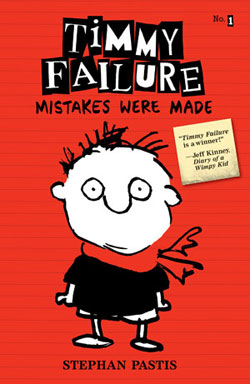 Timmy Failure : Mistakes Were Made by Stephan Pastis (Guest review by Leo – 9 years old)
Timmy Failure : Mistakes Were Made by Stephan Pastis (Guest review by Leo – 9 years old)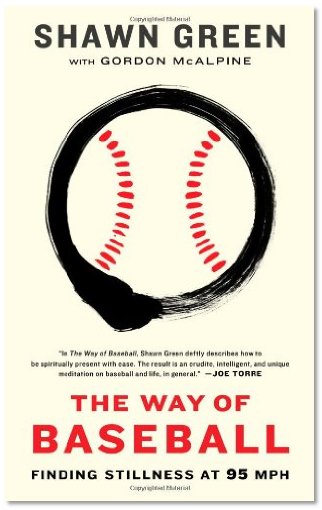 The Way of Baseball: Finding Stillness at 95 MPH by Shawn Green with Gordon McAlpine – About 10 days ago this book arrived in the mail from Amazon addressed to me but without any information who sent to me. Perhaps my benefactor thought I would enjoy it because it is written by an outstanding baseball player who happened to be Jewish (and at one point compared himself to Sandy Koufax) or because the author has written about his own psychology of baseball and living. In any case I read the book and thought it was somewhat interesting although quite repetitive. It is a relatively small book about 5×8 inches a little more than 200 pages. I did learn something from the author’s experience and philosophy but it might been more efficiently packaged in magazine article or a ½ hour interview of the author by Charlie Rose or maybe even better by Bob Costas. When Green hit the big leagues as a young man and ran into a batting slump, he figured out the secret to being a successful hitter and according to him this approach was also the secret to living life. He found out how to “ bring stillness into the flow of life” He mastered the ability to focus on the moment and allow all other thoughts especially those involved with his “ ego “, competitiveness, narcissism etc to fade into the background and ultimately disappear. Any one who has dabbled in or has mastered meditation or the art of Zen will know very well what this is about. Green started with just hitting balls on a batting tee over and over again with no concern about his usual opponent – that major league pitcher who would be facing him down. He often would do this exercise to near exhaustion with hitting the ball off the tee or what he would call just “chopping wood. ” He then would take this mind set to the real game and deemphasize the dual of out guessing this opponent on the mound but only concentrate on hitting the ball. Obviously, he had great skill and coordination to start with but he claimed that when he was able to put himself in this zone, he was clearly at his best. Conversely when he allowed himself to be caught up with what was expected of him because of his mulit million dollar contract, how many homeruns he hit that day or week, whether his batting average was trending up or down, how badly he was hitting that month, what the press said or didn’t say about him, his chances of making the All Star team etc. etc, he never was at his best and at times he would be at his worst. The ability to concentrate on the moment whether you are working out or enjoying your children’s or grandchildren’s school play may be a skill that has to be cultivated. That certainly is the lesson of this book. As a bonus in addition to his advice about how to approach baseball and life, Green also shares a few of his inside baseball stories such as when he met Ted Williams, memorable things that his coaches said to him, life traveling on the plane with the team etc. There was nothing very revealing as this was certainly not a “ tell all book “ but rather it told us how to find stillness when facing speeding baseballs coming at you or just about anything else that life might throw at you.
The Way of Baseball: Finding Stillness at 95 MPH by Shawn Green with Gordon McAlpine – About 10 days ago this book arrived in the mail from Amazon addressed to me but without any information who sent to me. Perhaps my benefactor thought I would enjoy it because it is written by an outstanding baseball player who happened to be Jewish (and at one point compared himself to Sandy Koufax) or because the author has written about his own psychology of baseball and living. In any case I read the book and thought it was somewhat interesting although quite repetitive. It is a relatively small book about 5×8 inches a little more than 200 pages. I did learn something from the author’s experience and philosophy but it might been more efficiently packaged in magazine article or a ½ hour interview of the author by Charlie Rose or maybe even better by Bob Costas. When Green hit the big leagues as a young man and ran into a batting slump, he figured out the secret to being a successful hitter and according to him this approach was also the secret to living life. He found out how to “ bring stillness into the flow of life” He mastered the ability to focus on the moment and allow all other thoughts especially those involved with his “ ego “, competitiveness, narcissism etc to fade into the background and ultimately disappear. Any one who has dabbled in or has mastered meditation or the art of Zen will know very well what this is about. Green started with just hitting balls on a batting tee over and over again with no concern about his usual opponent – that major league pitcher who would be facing him down. He often would do this exercise to near exhaustion with hitting the ball off the tee or what he would call just “chopping wood. ” He then would take this mind set to the real game and deemphasize the dual of out guessing this opponent on the mound but only concentrate on hitting the ball. Obviously, he had great skill and coordination to start with but he claimed that when he was able to put himself in this zone, he was clearly at his best. Conversely when he allowed himself to be caught up with what was expected of him because of his mulit million dollar contract, how many homeruns he hit that day or week, whether his batting average was trending up or down, how badly he was hitting that month, what the press said or didn’t say about him, his chances of making the All Star team etc. etc, he never was at his best and at times he would be at his worst. The ability to concentrate on the moment whether you are working out or enjoying your children’s or grandchildren’s school play may be a skill that has to be cultivated. That certainly is the lesson of this book. As a bonus in addition to his advice about how to approach baseball and life, Green also shares a few of his inside baseball stories such as when he met Ted Williams, memorable things that his coaches said to him, life traveling on the plane with the team etc. There was nothing very revealing as this was certainly not a “ tell all book “ but rather it told us how to find stillness when facing speeding baseballs coming at you or just about anything else that life might throw at you. Whitey Bulger: American’s Most Wanted Gangster and the Manhunt that Brought Him to Justice by Kevin Cullen and Shelley Murphy
Whitey Bulger: American’s Most Wanted Gangster and the Manhunt that Brought Him to Justice by Kevin Cullen and Shelley Murphy